Table of Contents
ToggleLaunching a SaaS business can be an exciting experience, but it takes more than just developing a great product to succeed in this competitive market.
One crucial element that can make or break your business is your go-to-market strategy. Without a solid plan in place, your product may never reach its target audience.
If you’re new to the SaaS industry or struggling to develop an effective go-to-market strategy, don’t worry. In this article, we’ll walk you through the key steps you need to take to launch your product successfully.
You’ll learn how to identify your target audience, choose the right channels, and measure your success.
By the end of this article, you’ll have a clear understanding of what it takes to develop a winning go-to-market strategy that can help your SaaS business grow and thrive. So let’s get started!
Understanding Target Market
Understanding your target market is critical for the success of any SaaS product or service. Your target market is the specific group of customers who are most likely to use and benefit from your product. You must consider demographics, psychographics, behavior patterns, and geographic location to identify your target market.
Demographic factors include age, gender, income level, education level, and occupation. Psychographic factors include personality traits, values, and lifestyle preferences. Behavioral patterns refer to your potential customers’ purchasing behavior, brand loyalty, and usage habits. Geographic location is also essential, as certain products or services may be more relevant or in demand in specific regions or countries.
By understanding your target market, you can create a more effective marketing strategy, tailor your messaging and product features to meet their specific needs, and ultimately increase customer acquisition and retention. Conducting market research, analyzing customer data, and gathering feedback is essential to identifying and understanding your target market.
Identifying the characteristics of your ideal customer
Identifying the characteristics of your ideal customer is essential for creating targeted marketing campaigns and tailoring your product or service to meet their needs. To determine the features of your perfect customer, you should consider factors such as demographics, psychographics, and behavior patterns.
Demographic factors include age, gender, income level, education level, and occupation. Psychographic characteristics include personality traits, values, and lifestyle preferences. Behavioral patterns refer to your potential customers’ purchasing behavior, brand loyalty, and usage habits.
You should also consider your ideal customer’s pain points, challenges, and goals. By understanding their pain points, you can create a product or service that solves their specific problems. Understanding their goals can help you market your product or service as a solution to achieve those goals.
By identifying the characteristics of your ideal customer, you can create targeted marketing campaigns that speak directly to their needs and ultimately increase customer acquisition and retention.
Creating customer personas
Creating customer personas is a powerful way to bring your ideal customer to life and better understand their needs, challenges, and behavior patterns. A customer persona is a detailed profile of a fictional person representing your perfect customer.
To create customer personas, research and analyze data on your target market. Look for commonalities in demographics, psychographics, and behavior patterns. Once you have identified these commonalities, create fictional profiles that capture the essence of your ideal customers.
A typical customer persona includes details such as the customer’s name, age, gender, occupation, income level, and educational background. It also contains information about their personal interests, values, and lifestyle preferences.
You should also include details on the customer’s pain points, challenges, and goals. This can help you tailor your messaging and product features to meet their needs. Additionally, include information on how the customer will use your product or service.
Creating customer personas helps you better understand your target market, making it easier to create targeted marketing campaigns and product features that resonate with your ideal customers. It also lets you anticipate customer needs and stay ahead of the competition.
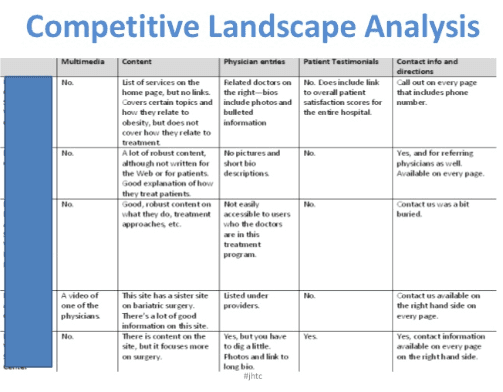
Analyzing the Competitive Landscape
Analyzing the competitive landscape is essential in developing a successful SaaS product or service. It involves researching and analyzing the strengths and weaknesses of your competitors, as well as identifying any opportunities and threats in the market.
- To conduct a competitive analysis, start by identifying your key competitors. This can be done through research and industry knowledge. Once you have placed your competitors, analyze their products, pricing strategies, marketing campaigns, and target markets.
- Next, identify the strengths and weaknesses of your competitors. This can include product features, customer service, and brand recognition. You can gather this information through online reviews, customer feedback, and industry reports.
- After analyzing your competitors’ strengths and weaknesses, identify any opportunities and threats in the market. This can include emerging trends, changes in customer behavior, and shifts in the competitive landscape.
By conducting a competitive analysis, you can gain valuable insights into the market and use this information to develop a product or service that stands out. It can also help you identify areas where you can differentiate yourself from your competitors and create a unique value proposition.
Identifying your competitors and their strengths and weaknesses
Identifying your competitors’ strengths and weaknesses is crucial in developing a successful SaaS product or service. You should start by researching the market and identifying companies that offer similar products or services.
- Once you have identified your competitors, analyze their strengths and weaknesses. This can include product features, customer service, and brand recognition. You can gather this information through online reviews, customer feedback, and industry reports.
- Regarding product features, you should look at how your competitors’ products compare to yours. What are the critical elements of their product? Are there features that you do not offer? Are there any features that you provide that you do not?
- Look at how your competitors handle customer support and respond to complaints. Do they offer a knowledge base or self-service resources? Are they available via phone, email, or chat? How quickly do they respond to customer inquiries?
- Finally, consider your competitors’ brand recognition and reputation. How well-known are they in the market? Do they have a positive or negative reputation among customers and industry experts?
By identifying your competitors and their strengths and weaknesses, you can gain valuable insights into the market and use this information to differentiate your product or service and create a unique value proposition.
Differentiating your product or service from competitors
Differentiating your product or service from competitors is essential for attracting and retaining customers in a crowded SaaS market. To determine your product or service, you should consider the following:
- Identify your unique selling proposition: Determine what separates your product or service. Is your product easier to use, more affordable, or more efficient than your competitors’? What features or benefits do you offer that your competitors do not? Once you have identified your unique selling proposition, use it to create a compelling value proposition for your customers.
- Focus on customer experience: An exceptional customer experience can differentiate your product or service. This can include user-friendly interfaces, responsive customer support, and personalized interactions. Creating a positive and memorable customer experience can build brand loyalty and increase customer retention.
- Emphasize your brand: Building a solid brand identity can differentiate your product or service and increase customer trust and loyalty. This includes creating a distinctive logo, color scheme, and messaging that resonates with your target audience. Consistently delivering on your brand promise can also help differentiate your product or service.
- Keep innovating: Continuously improving and adding new features to your product or service can help differentiate you from competitors. Regularly gathering customer feedback and implementing new features or improvements can keep your product or service ahead of the curve and increase customer satisfaction.
By differentiating your product or service from competitors, you can stand out in a crowded SaaS market and attract and retain customers over the long term.

Conducting Market Research
Conducting market research is critical for understanding your target market, identifying customer needs, and developing a successful SaaS product or service. Market research involves collecting and analyzing data on your target market, competitors, and industry trends.
- To conduct market research, define your objectives and develop a research plan. This should include identifying the research methods and data sources you will use, such as surveys, focus groups, or customer interviews.
- Next, gather data on your target market, competitors, and industry trends. This can include analyzing customer data, conducting competitor analysis, and reviewing industry reports and trends.
- Once you have gathered the data, analyze and interpret it to identify insights and trends. Look for patterns in customer behavior, preferences, and pain points. Identify gaps in the market that you can fill with your product or service.
- Finally, use the insights from your market research to develop a product or service that meets the needs of your target market. This can include tailoring your messaging, product features, and pricing strategy to meet customer needs.
By conducting market research, you can gain a deeper understanding of your target market, identify gaps in the market, and develop a product or service that meets customer needs. This can help you gain a competitive advantage and increase customer acquisition and retention over the long term.
Gathering data on market size, potential, and trends
Gathering market size, potential, and trends is essential to conducting market research for a SaaS product or service. Here are some steps to collect this data:
- Identify your target market: Define the specific group of customers you want to target with your product or service.
- Analyze industry reports: Look for industry reports that provide data on market size and potential. You can often find industry reports from research firms, trade associations, and government agencies. These reports can provide valuable insights into the overall size of the market and growth trends.
- Conduct surveys: Surveys can help you gather data on customer preferences and behavior, as well as the market size and potential. You can use online survey tools to create and distribute surveys to your target market.
- Gather data on your competitors: Analyze your competitors’ market share and growth trends to gain insights into the overall size and potential of the market.
- Analyze search engine trends: Analyze search engine trends and keyword search volumes to identify popular topics and areas of interest in your industry.
- Monitor social media: Monitor social media platforms to identify trends and conversations related to your industry and target market.
By gathering data on market size, potential, and trends, you can better understand your target market and the overall market landscape. This information can help you make informed decisions about product development, pricing, and marketing strategy, ultimately increasing your chances of success in the SaaS market.
Conducting surveys and interviews to gather customer feedback
Conducting surveys and interviews is an effective way to gather customer feedback and insights that can inform your product or service development and marketing strategies. Here are some steps to conduct surveys and interviews:
- Define your objectives: Determine what you want to learn from your customers and what specific questions you want to ask.
- Develop a survey or interview guide: Develop a set of questions to help you achieve your research objectives. Ensure the questions are clear, concise, and relevant to your target market.
- Choose a method: Decide whether to conduct surveys online, over the phone, or in person. Consider the pros and cons of each method and choose the one that best suits your needs.
- Recruit participants: Identify your target market and recruit participants who match your target audience. You can recruit participants through social media, online advertising, or email marketing.
- Conduct the survey or interview: Conduct the survey or interview and record the responses. Be sure to thank participants for their time and provide an incentive if appropriate.
- Analyze the results: Analyze the data to identify trends, patterns, and insights. Look for commonalities in the responses and use the insights to inform your product or service development and marketing strategies.
- Follow up with participants: Consider following up with them to provide updates on your product or service and thank them for their feedback.
You can gain valuable insights into your customers’ needs, preferences, and pain points by conducting surveys and interviews. This information can help you create a product or service that meets their needs and develop targeted marketing campaigns that resonate with your target market.
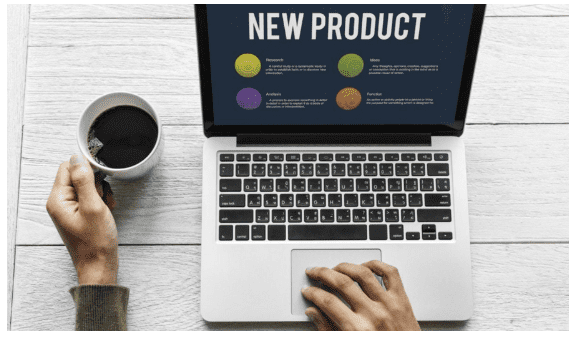
Defining Your Product or Service
Defining your product or service is critical in developing a successful SaaS business. It involves clearly articulating the features, benefits, and value proposition of your offering. Here are some steps to define your product or service:
- Identify your target market: Determine the specific group of customers you want to target with your product or service.
- Define your problem: Identity the problem or pain point your product or service is designed to solve. Clearly articulate the problem and the impact it has on your target market.
- Identify the benefits: Determine the help of your product or service for your target market. What value does it offer? How does it solve their problem? What makes it better than competing solutions?
- Define the features: Identify your product or service’s specific features and functionality. What are the key elements that differentiate your product or service from competitors? How do these features solve your customers’ problems?
- Develop a unique value proposition: Develop a unique value proposition that clearly communicates the benefits of your product or service and how it solves your customers’ problems. Your value proposition should be clear, concise, and relevant to your target market.
- Test your product or service: Test your product or service with a group of customers to gather feedback and identify areas for improvement. Use this feedback to refine your product or service and enhance its value proposition.
By defining your product or service, you can clearly articulate its value proposition and differentiate it from competitors. This can help attract and retain customers, increase customer satisfaction, and drive business growth.
Identifying Your Unique Value Proposition
Identifying your unique value proposition (UVP) is critical for developing a successful SaaS product or service. Your UVP is the unique benefit your product or service provides to your target market, differentiating it from competing solutions. Here are some steps to identify your UVP:
- Identify your target market: Determine the specific group of customers you want to target with your product or service.
- Identify the problem you are solving: Identify the problem or pain point that your product or service is designed to solve. Clearly articulate the problem and the impact it has on your target market.
- Identify your competition: Identify your key competitors and analyze their products, pricing, and messaging. Determine how your product or service differs from theirs and what unique benefits it offers.
- Determine your unique benefits: Identify the specific benefits of your product or service that differentiate it from competing solutions. These benefits should directly address the problem or pain point you identified and provide a unique advantage to your target market.
- Develop a UVP statement: Develop a clear and concise statement that communicates the unique benefits of your product or service and how it solves your customers’ problems. Your UVP statement should be relevant to your target market, easy to understand, and memorable.
- Test your UVP: Test your UVP with a group of customers to gather feedback and refine it as needed.
By identifying your UVP, you can differentiate your product or service from competitors and create a compelling value proposition for your target market. This can help attract and retain customers, increase customer satisfaction, and drive business growth.
Identifying the unique features and benefits of your product or service
Identifying your product or service’s unique features and benefits is essential for creating a compelling value proposition that differentiates it from competing solutions. Here are some steps to identify the special features and benefits of your product or service:
- Identify your target market: Determine the specific group of customers you want to target with your product or service.
- Analyze customer needs: Identify your target market’s needs, pain points, and challenges. This can be done through market research, customer feedback, and competitor analysis.
- Determine your unique features: Identify the specific characteristics of your product or service that differentiate it from competing solutions. These features directly address your target market’s needs and pain points and provide a unique advantage.
- Determine your benefits: Identify the specific benefits of your product or service for your target market. These benefits directly relate to your identified features and provide a unique advantage over competing solutions.
- Develop a value proposition: Develop a clear and concise statement that communicates your product or service’s unique features and benefits and how it solves your customers’ problems. Your value proposition should be relevant to your target market, easy to understand, and memorable.
- Test your value proposition: Test your value proposition with a group of customers to gather feedback and refine it as needed.
By identifying your product or service’s unique features and benefits, you can create a compelling value proposition that differentiates it from competitors and addresses your target market’s needs and pain points. This can help attract and retain customers, increase customer satisfaction, and drive business growth.
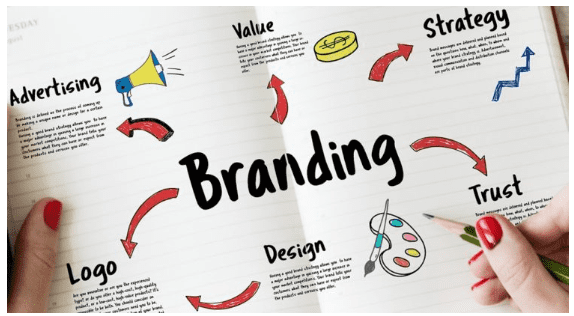
Developing Your Branding and Messaging
Developing your branding and messaging is critical for creating a solid and recognizable identity for your SaaS product or service. Here are some steps to establish your branding and messaging:
- Identify your target market: Determine the specific group of customers you want to target with your product or service.
- Develop your brand identity: A distinct brand identity reflects your product or service and resonates with your target market. This includes developing a logo, color scheme, and messaging that is consistent and recognizable.
- Develop your messaging strategy: Develop a messaging plan that communicates your product or service’s unique features and benefits and how it solves your customers’ problems. Your messaging should be clear, concise, and relevant to your target market.
- Create marketing materials: Develop marketing materials, such as a website, social media profiles, and advertising campaigns, that align with your brand identity and messaging strategy. These materials should capture the attention of your target market and communicate the unique value of your product or service.
- Test your messaging and branding: Test your messaging and branding with a group of customers to gather feedback and refine it as needed.
You can create a memorable and recognizable identity for your SaaS product or service by developing a solid brand identity and messaging strategy. This can help you attract and retain customers, increase customer loyalty, and drive business growth.
Creating messaging that highlights your unique value proposition
Creating messaging that highlights your unique value proposition is critical for communicating the benefits of your SaaS product or service to your target market. Here are some steps to create messaging that highlights your unique value proposition:
- Identify your target market: Determine the specific group of customers you want to target with your product or service.
- Define your unique value proposition: Identify the fantastic benefits of your product or service that differentiate it from competing solutions. These benefits should directly address your target market’s needs and pain points and provide a unique advantage.
- Develop your messaging strategy: Develop a messaging plan that communicates your unique value proposition and resonates with your target market. Your messaging should be clear, concise, and relevant to your target market.
- Craft your messaging: Craft messaging that highlights your unique value proposition and addresses your target market’s needs and pain points. Use clear and concise language that is easy to understand and memorable.
- Test your messaging: Test your messaging with a group of customers to gather feedback and refine it as needed.
By creating messaging that highlights your unique value proposition, you can effectively communicate the benefits of your SaaS product or service to your target market. This can help attract and retain customers, increase customer satisfaction, and drive business growth.
Pricing and Packaging
Pricing and packaging your SaaS product or service is critical to developing a successful business model. Here are some steps to effectively price and package your offering:
- Identify your target market: Determine the specific group of customers you want to target with your product or service.
- Analyze your costs: Determine the costs associated with developing and delivering your product or service. This includes development, hosting, infrastructure, and ongoing maintenance and support costs.
- Research the market: Research the market to determine pricing trends and competitor pricing strategies. Determine how your pricing strategy compares to competitors and how it fits within the overall market landscape.
- Determine your pricing strategy: Determine your pricing strategy based on your costs and market research. This can include pricing based on the value of your product or service, cost-plus pricing, or competition-based pricing.
- Develop your pricing tiers: Develop pricing tiers that align with the needs and budgets of your target market. This can include offering different pricing tiers with varying levels of features and functionality.
- Test your pricing strategy: Test your pricing strategy with customers to gather feedback and refine it as needed.
By effectively pricing and packaging your SaaS product or service, you can attract and retain customers, increase customer satisfaction, and drive business growth.

Packaging your product or service in a way that meets customer needs and expectations
Packaging your SaaS product or service in a way that meets customer needs and expectations is critical for driving customer satisfaction and retention. Here are some steps to effectively package your offering:
- Identify your target market: Determine the specific group of customers you want to target with your product or service.
- Analyze customer needs: Analyze your target market’s needs and pain points. This can be done through market research, customer feedback, and competitor analysis.
- Develop your packaging strategy: Develop a packaging strategy that aligns with the needs and expectations of your target market. This can include bundling features and functionality into different packages, offering different pricing tiers, or offering customization options.
- Design your packaging: Design your packaging to be visually appealing and easy to understand. Use clear and concise language to communicate the features and benefits of each package.
- Test your packaging: Test your packaging with customers to gather feedback and refine it as needed.
By effectively packaging your SaaS product or service, you can meet the needs and expectations of your target market, increase customer satisfaction, and ultimately drive business growth.
Developing Your Go-to-Market Strategy
Developing a go-to-market strategy is essential for successfully launching and scaling your SaaS product or service. Here are some steps to build an effective go-to-market plan:
- Identify your target market: Determine the specific group of customers you want to target with your product or service.
- Define your unique value proposition: Clearly articulate your product or service’s special features and benefits that differentiate it from competing solutions.
- Develop your marketing plan: Develop a marketing plan that includes tactics for reaching your target market, such as social media marketing, content marketing, email marketing, and advertising campaigns. Your marketing plan should be tailored to your target market and aligned with your unique value proposition.
- Develop your sales strategy: Develop a sales strategy that includes tactics for converting leads into customers, such as offering free trials, demos, and targeted follow-up. Your sales strategy should be designed to effectively communicate the benefits of your product or service and address your target market’s needs and pain points.
- Test your go-to-market strategy: Test your strategy with customers to gather feedback and refine it as needed.
- Launch and scale: Once you have refined your go-to-market strategy, launch your product or service and scale your marketing and sales efforts based on customer feedback and performance metrics.
By developing an effective go-to-market strategy, you can effectively reach your target market, communicate the benefits of your product or service, and drive customer acquisition and retention.
Creating content that educates and engages your target market
Creating content that educates and engages your target market is critical for building brand awareness, establishing thought leadership, and driving customer engagement. Here are some steps to create compelling content:
- Identify your target market: Determine the specific group of customers you want to target with your content.
- Analyze customer needs: Analyze your target market’s needs and pain points. This can be done through market research, customer feedback, and competitor analysis.
- Develop your content strategy: Develop a content strategy that aligns with the needs and interests of your target market. This can include creating blog posts, videos, podcasts, social media posts, and webinars. Your content strategy should be tailored to your target market and aligned with your unique value proposition.
- Create valuable content: Create valuable content that educates and informs your target market. Use clear and concise language to communicate your message and address your target market’s needs and pain points. Use a mix of educational and engaging content to keep your audience interested.
- Distribute your content: Distribute your content through various channels, such as social media, email marketing, and search engine optimization (SEO). Use analytics to track the performance of your content and adjust your strategy as needed.
- Test and refine: Test and refine your content strategy based on customer feedback and performance metrics.
Creating content that educates and engages your target market can build brand awareness, establish thought leadership, and drive customer engagement. This can help attract and retain customers, increase customer satisfaction, and drive business growth.
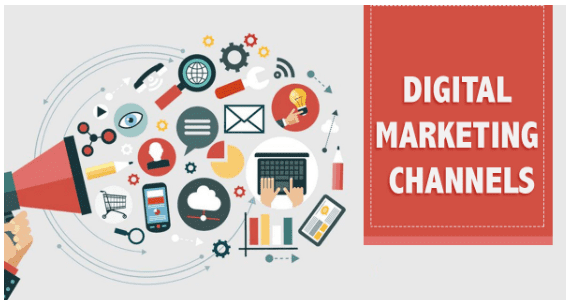
Leveraging digital marketing channels to reach your target market
Leveraging digital marketing channels is critical for reaching your target market, building brand awareness, and driving customer acquisition and retention. Here are some steps to effectively leverage digital marketing channels:
- Identify your target market: Determine the specific group of customers you want to target with your digital marketing efforts.
- Develop your digital marketing strategy: Develop a digital marketing strategy that includes tactics for reaching your target market, such as social media marketing, search engine optimization (SEO), email marketing, and pay-per-click (PPC) advertising. Your digital marketing strategy should be tailored to your target market and aligned with your unique value proposition.
- Create valuable content: Create valuable content, such as blog posts, videos, and social media posts, that educates and informs your target market. Use clear and concise language to communicate your message and address your target market’s needs and pain points.
- Optimize your website: Optimize your website for SEO by using relevant keywords and providing valuable content that meets the needs and interests of your target market. Ensure your website is mobile-friendly and easy to navigate.
- Leverage social media: Leverage social media platforms, such as Facebook, Twitter, and LinkedIn, to reach your target market and promote your content. Engage with your audience and respond to their comments and questions.
- Use email marketing: Use email marketing to communicate with your target market and promote your content and offers. Personalize your emails and segment your list based on customer interests and behavior.
- Test and refine: Test and refine your digital marketing strategy based on customer feedback and performance metrics.
You can effectively leverage digital marketing channels to reach your target market, build brand awareness, and drive customer acquisition and retention. This can help attract and retain customers, increase customer satisfaction, and drive business growth.
Sales
Developing a sales strategy is critical for converting leads into customers and driving business growth. Here are some steps to build an effective sales strategy:
- Identify your target market: Determine the specific group of customers you want to target with your sales efforts.
- Define your unique value proposition: Clearly articulate your product or service’s special features and benefits that differentiate it from competing solutions.
- Develop your sales process: Develop a sales process that includes tactics for converting leads into customers, such as offering free trials, demos, and targeted follow-up. Your sales process should be designed to effectively communicate the benefits of your product or service and address your target market’s needs and pain points.
- Train your sales team: Train your sales team on your product or service, unique value proposition, and sales process. Ensure your sales team has the necessary tools and resources to effectively communicate the benefits of your product or service to your target market.
- Measure and analyze your sales performance: Use analytics to track the performance of your sales efforts and adjust your strategy as needed. Analyze your sales pipeline and conversion rates to identify areas for improvement.
- Test and refine: Test and refine your sales strategy based on customer feedback and performance metrics.
By developing an effective sales strategy, you can convert leads into customers, increase customer satisfaction, and ultimately drive business growth.
Building relationships with potential customers
Building relationships with potential customers is critical for establishing trust and driving customer acquisition and retention. Here are some steps to effectively build relationships with potential customers:
- Identify your target market: Determine the specific group of customers you want to target with your relationship-building efforts.
- Develop your messaging strategy: Develop a messaging plan that clearly communicates your unique value proposition and resonates with your target market. Your messaging should be clear, concise, and relevant to your target market.
- Engage with potential customers: Engage with potential customers through social media, email marketing, and other channels to provide valuable content and answer their questions. Personalize your outreach and respond to their comments and questions.
- Offer free trials or demos: Offer free trials or demos of your product or service to potential customers to give them a firsthand experience of the benefits of your solution.
- Follow up with potential customers: Follow up with potential customers after a free trial or demo to answer their questions and address their concerns. Offer targeted solutions and customize your offerings to their specific needs.
- Nurture relationships over time: Continue to nurture relationships with potential customers through targeted email marketing, personalized outreach, and ongoing support.
Building relationships with potential customers can establish trust, increase customer loyalty, and ultimately drive business growth.

Providing personalized and relevant information to potential customers
Providing personalized and relevant information to potential customers is critical for building relationships and customer acquisition and retention. Here are some steps to effectively offer personalized and relevant information to potential customers:
- Identify your target market: Determine the specific group of customers you want to target with your personalized outreach efforts.
- Analyze customer needs: Analyze your target market’s needs and pain points. This can be done through market research, customer feedback, and competitor analysis.
- Develop your messaging strategy: Develop a messaging plan that clearly communicates your unique value proposition and resonates with your target market. Your messaging should be clear, concise, and relevant to your target market.
- Leverage marketing automation: Leverage marketing automation tools to deliver personalized and relevant information to potential customers. This can include targeted email marketing campaigns and personalized website content.
- Use customer data: Use customer data, such as purchase history and customer behavior, to deliver personalized recommendations and solutions to potential customers.
- Offer targeted solutions: Offer targeted solutions and customize your offerings to potential customer’s specific needs and pain points. Use clear and concise language to communicate the benefits of your solution.
- Measure and analyze your results: Use analytics to track the performance of your personalized outreach efforts and adjust your strategy as needed.
You can establish trust, increase customer loyalty, and drive business growth by providing personalized and relevant information to potential customers.
Customer Success
Developing a customer success strategy is critical for driving customer satisfaction and retention. Here are some steps to establish an effective customer success strategy:
- Identify your target market: Determine the specific group of customers you want to target with your customer success efforts.
- Develop your onboarding process: Develop an onboarding process that ensures customers have a seamless experience when using your product or service. Provide resources and support to help customers get up and running quickly.
- Provide ongoing support: To help customers troubleshoot issues and answer their questions. Use a variety of channels, such as email, phone, and chat, to provide support.
- Gather customer feedback: Gather customer feedback to understand their needs and pain points. Use customer feedback to improve your product or service and enhance the customer experience.
- Training and resources: Offer training and resources, such as online courses, webinars, and user guides, to help customers optimize their use of your product or service.
- Measure and analyze customer satisfaction: Use surveys and other feedback mechanisms to measure customer satisfaction and identify areas for improvement.
- Proactively engage with customers: Proactively engage with customers to ensure they get the most value from your product or service. Offer targeted solutions and customize your offerings to their specific needs.
Developing an effective customer success strategy can drive customer satisfaction and retention, increase customer loyalty, and ultimately drive business growth.
Providing exceptional customer support and onboarding
Providing exceptional customer support and onboarding is critical for customer satisfaction and retention. Here are some steps to effectively offer excellent customer support and onboarding:
- Develop your onboarding process: Develop an onboarding process that ensures customers have a seamless experience when using your product or service. Provide resources and support to help customers get up and running quickly.
- Provide multiple channels for support: Provide multiple channels for support, such as email, phone, and chat, to help customers troubleshoot issues and answer their questions.
- Proactive support: Offer bold support to anticipate and address potential issues before they become problems. Use automation and machine learning to predict customer needs and provide targeted solutions.
- Personalized support: To each customer’s specific needs and pain points, personalized support. Use clear and concise language to communicate the benefits of your solution.
- Training and resources: Provide training and resources, such as online courses, webinars, and user guides, to help customers optimize their use of your product or service.
- Measure and analyze customer satisfaction: Use surveys and other feedback mechanisms to measure customer satisfaction and identify areas for improvement.
- Continuously improve: Continuously improve your customer support and onboarding process based on customer feedback and performance metrics.
By providing exceptional customer support and onboarding, you can drive customer satisfaction and retention, increase customer loyalty, and ultimately drive business growth.
Measuring and tracking customer satisfaction and retention metrics
Measuring and tracking customer satisfaction and retention metrics is critical for understanding customer behavior and driving business growth. Here are some essential customer satisfaction and retention metrics to measure and track:
- Net Promoter Score (NPS): NPS measures customer loyalty by asking customers how likely they are to recommend your product or service to others.
- Customer satisfaction (CSAT) score: CSAT measures how satisfied customers are with your product or service. It is typically measured through surveys and feedback mechanisms.
- Customer retention rate: Customer retention rate measures the percentage of customers who continue using your product or service over time.
- The churn rate measures the percentage of customers who stop using your product or service over time.
- Customer lifetime value (CLTV): CLTV measures the total value a customer brings to your business throughout their relationship with your company.
- Repeat purchase rate: The repeat purchase rate measures the percentage of customers who make a repeat purchase of your product or service.
- Customer engagement: Customer engagement measures how actively customers engage with your product or service, such as through website visits, app usage, and social media interactions.
By measuring and tracking these customer satisfaction and retention metrics, you can gain insights into customer behavior, identify areas for improvement, and optimize your customer success strategy to drive business growth.
Partnerships and Collaborations
Developing partnerships and collaborations are critical for expanding your reach, driving customer acquisition, and accelerating business growth. Here are some steps to build effective partnerships and affiliations:
- Identify potential partners: Identify potential partners who share your target market and have complementary products or services.
- Develop your value proposition: Clearly articulate the unique value proposition of your product or service and how it aligns with the goals and interests of potential partners.
- Build relationships: Build relationships with potential partners through networking events, industry conferences, and social media outreach.
- Create a partnership strategy: Develop a partnership strategy that includes tactics for reaching out to potential partners, such as offering free trials or demos, hosting joint webinars or events, and co-creating content.
- Negotiate terms: Negotiate the terms of the partnership, such as revenue sharing, intellectual property rights, and performance metrics.
- Implement and measure: Implement the partnership and measure its performance based on agreed-upon metrics. Continuously optimize the collaboration based on customer feedback and performance metrics.
You can expand your reach, drive customer acquisition, and accelerate business growth by developing effective partnerships and collaborations.
Building relationships with potential partners and collaborators
Building relationships with potential partners and collaborators is critical for establishing trust and developing mutually beneficial partnerships. Here are some steps to effectively build relationships with potential partners and collaborators:
- Identify potential partners: Identify potential partners who share your target market and have complementary products or services.
- Develop your value proposition: Clearly articulate the unique value proposition of your product or service and how it aligns with the goals and interests of potential partners.
- Build relationships: Build relationships with potential partners through networking events, industry conferences, and social media outreach. Personalize your outreach and respond to their comments and questions.
- Offer value: Offer value to potential partners by providing free trials or demos of your product or service, co-creating content, or hosting joint webinars or events.
- Establish trust: Establish trust by delivering on your promises, providing exceptional customer support, and being transparent about your business practices.
- Negotiate terms: Negotiate the terms of the partnership, such as revenue sharing, intellectual property rights, and performance metrics. Ensure the times are mutually beneficial and align with the goals of both parties.
- Nurture relationships over time: Continue nurturing relationships with partners through ongoing support and collaboration. Use analytics to track the partnership’s performance and adjust your strategy.
Building relationships with potential partners and collaborators allows you to establish trust, develop mutually beneficial partnerships, and ultimately drive business growth.

Creating partnerships and collaborations that benefit both parties
Creating partnerships and collaborations that benefit both parties is critical for establishing long-term, sustainable relationships. Here are some steps to effectively develop partnerships and alliances that benefit both parties:
- Identify potential partners: Identify potential partners who share your target market and have complementary products or services.
- Develop your value proposition: Clearly articulate the unique value proposition of your product or service and how it aligns with the goals and interests of potential partners.
- Build relationships: Build relationships with potential partners through networking events, industry conferences, and social media outreach. Personalize your outreach and respond to their comments and questions.
- Identify mutual goals: Identify mutual goals that both parties can achieve through the partnership. This can include increasing revenue, expanding reach, or enhancing customer satisfaction.
- Develop a partnership strategy: Develop a partnership strategy that includes tactics for achieving mutual goals, such as co-creating content, offering bundled solutions, or hosting joint webinars or events.
- Negotiate terms: Negotiate the terms of the partnership, such as revenue sharing, intellectual property rights, and performance metrics. Ensure the times are mutually beneficial and align with the goals of both parties.
- Implement and measure: Implement the partnership and measure its performance based on agreed-upon metrics. Continuously optimize the collaboration based on customer feedback and performance metrics.
You can establish long-term, sustainable relationships, drive business growth, and achieve mutual goals by creating partnerships and collaborations that benefit both parties.
Implementation and Measurement
Implementation and measurement are critical components of any successful business strategy. Here are some steps to effectively implement and measure your business strategy:
- Define goals and objectives: Clearly define your goals and objectives, and ensure they are aligned with your overall business strategy.
- Develop an action plan: Develop an action plan that outlines specific steps for achieving your goals and objectives. Assign responsibilities and set deadlines for each step.
- Communicate your strategy: Communicate your plan to your team and stakeholders to ensure everyone is aligned and working toward the same goals.
- Implement your strategy: Implement your strategy by executing the action plan and monitoring progress. Use project management tools to track progress and ensure deadlines are met.
- Measure performance: Measure the performance of your strategy based on agreed-upon metrics. Use analytics to track performance and identify areas for improvement.
- Analyze results: Analyze the results of your strategy to identify areas for improvement and optimize your approach. Continuously test and refine your strategy based on customer feedback and performance metrics.
- Adjust your strategy: Adjust your strategy as needed based on performance metrics and customer feedback. Continuously optimize your approach to achieve your goals and objectives.
By effectively implementing and measuring your business strategy, you can achieve your goals, drive business growth, and optimize your approach over time.
Identifying key milestones and timelines for implementing your go-to-market strategy
Identifying key milestones and timelines for implementing your go-to-market strategy is critical for ensuring your plan is executed effectively and on time. Here are some steps to identify critical milestones and timelines for implementing your go-to-market strategy:
- Define your strategy: Define your go-to-market strategy and ensure it is aligned with your overall business strategy.
- Identify critical tasks: Identify the tasks that must be completed to implement your strategies, such as developing marketing materials, building partnerships, or launching a new product or service.
- Assign responsibilities: Assign responsibilities for each task to ensure everyone on your team knows what they need to do and when.
- Set timelines: Set timelines for each task and ensure they are realistic and achievable. Consider dependencies between tasks and adjust timelines accordingly.
- Identify critical milestones: Identify essential milestones for your strategy, such as launching a new product or service or signing a crucial partnership. Use these milestones to track progress and ensure you stay on track.
- Develop a timeline: Develop a timeline that includes all tasks and milestones and ensures you have adequate time to complete each task before the next milestone.
- Monitor progress: Monitor progress regularly to ensure you are on track to achieve your goals. Adjust timelines or tasks as needed to provide you stay on track.
By identifying key milestones and timelines for implementing your go-to-market strategy, you can ensure your system is executed effectively and on time and achieve your business goals.
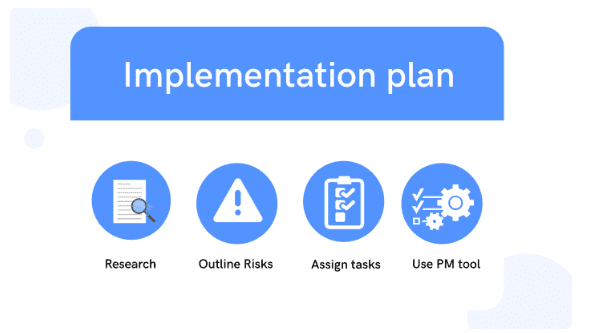
Creating an implementation plan that outlines roles and responsibilities
Creating an implementation plan that outlines roles and responsibilities is critical for ensuring everyone on your team knows what they need to do to execute your go-to-market strategy effectively. Here are some steps to create an implementation plan that outlines roles and responsibilities:
- Define your strategy: Define your go-to-market strategy and ensure it is aligned with your overall business strategy.
- Identify critical tasks: Identify the essential functions that must be completed to implement your strategies, such as developing marketing materials, building partnerships, or launching a new product or service.
- Assign responsibilities: Assign responsibilities for each task to ensure everyone on your team knows what they need to do and when. Consider each team member’s strengths and expertise when assigning tasks.
- Define roles and responsibilities: Define the roles and responsibilities of each team member involved in implementing the strategy. Be specific about what each team member is responsible for, and ensure everyone understands their role in executing the plan.
- Develop a timeline: Develop a timeline that includes all tasks and milestones and ensures you have adequate time to complete each task before the next milestone.
- Communicate the plan: Communicate the implementation plan to your team and stakeholders to ensure everyone understands their role and responsibilities. Be clear about expectations and deadlines.
- Monitor progress: Monitor progress regularly to ensure you are on track to achieve your goals. Adjust roles and responsibilities as needed to provide you stay on track.
By creating an implementation plan that outlines roles and responsibilities, you can ensure everyone on your team knows what they need to do to execute your go-to-market strategy effectively and achieve your business goals.
Measurement
Measurement is critical for understanding the effectiveness of your go-to-market strategy and optimizing your approach over time. Here are some steps to effectively measure the performance of your go-to-market process:
- Define metrics: Define the key performance indicators (KPIs) that you will use to measure the success of your strategy, such as customer acquisition rate, conversion rate, or revenue growth.
- Set targets: Set targets for each KPI based on your business goals and objectives.
- Collect data: Collect data on each KPI using analytics tools, surveys, and other feedback mechanisms.
- Analyze data: Analyze the data to identify trends and patterns and gain insights into the effectiveness of your strategy.
- Adjust your approach: Adjust your approach based on the data and insights you have collected. Test different tactics and strategies to optimize your process.
- Monitor progress: Monitor progress regularly to ensure you are on track to achieve your targets. Adjust your approach as needed to provide you meet your goals.
- Report results: Report the results of your measurement efforts to your team and stakeholders to ensure everyone is aware of your progress and performance.
By effectively measuring the performance of your go-to-market strategy, you can gain insights into customer behavior, optimize your approach over time, and achieve your business goals.
Tracking and analyzing KPIs regularly
Tracking and analyzing KPIs regularly is critical for understanding the effectiveness of your go-to-market strategy and making data-driven decisions to optimize your approach. Here are some steps to effectively track and analyze KPIs:
- Set a regular cadence: Set a normal tempo for tracking and analyzing your KPIs, such as daily, weekly, or monthly.
- Use analytics tools: Use analytics tools to collect and track data on your KPIs. Choose tools that are easy to use and provide actionable insights.
- Monitor performance: Monitor the performance of each KPI regularly and compare it to your targets. Use visualizations and dashboards to make it easy to spot trends and patterns quickly.
- Analyze data: Analyze the data to identify trends and patterns and gain insights into the effectiveness of your strategy. Use tools like A/B testing to optimize your approach over time.
- Adjust your approach: Adjust your approach based on the data and insights you have collected. Test different tactics and methods to optimize your practice.
- Report results: Report the results of your measurement efforts to your team and stakeholders to ensure everyone is aware of your progress and performance. Use data visualization tools to make it easy to understand and digest the data.
Regularly tracking and analyzing your KPIs can gain insights into customer behavior, optimize your approach over time, and achieve your business goals.
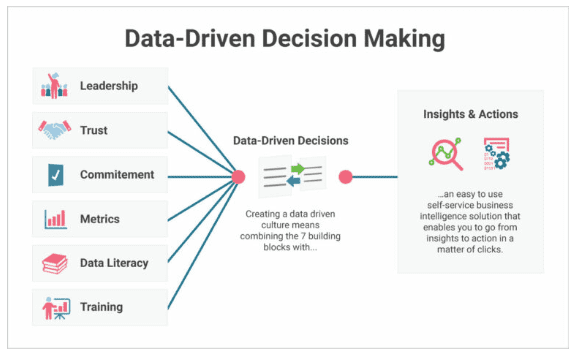
Making data-driven decisions to optimize and refine your go-to-market strategy
Making data-driven decisions to optimize and refine your go-to-market strategy is critical for ensuring that you make the most of your resources and achieve your business goals. Here are some steps to make data-driven decisions to optimize and refine your go-to-market strategy:
- Define your business goals: Clearly define them and ensure they align with your go-to-market strategy.
- Identify key performance indicators (KPIs): Identify the KPIs that are most relevant to your business goals and track them using analytics tools.
- Collect and analyze data: Collect and analyze data on your KPIs to gain insights into customer behavior, identify trends, and evaluate the effectiveness of your strategy.
- Test and optimize: Test different tactics and approaches to optimize your strategy based on the insights you have gained from your data analysis. Continuously monitor and adjust your system as needed.
- Communicate results: Communicate the results of your data analysis to your team and stakeholders to ensure everyone is aware of your progress and performance. Use data visualization tools to make it easy to understand and digest the data.
- Learn from failures: Embrace failures as opportunities to learn and refine your approach. Use data to understand what went wrong and why, and adjust your strategy accordingly.
By making data-driven decisions to optimize and refine your go-to-market strategy, you can ensure that you make the most of your resources and achieve your business goals over time.
Final thoughts and recommendations
Developing a successful go-to-market strategy requires careful planning, research, and execution. Start with a clear understanding of your target market and their needs. Here are some final thoughts and recommendations to help you create an effective go-to-market plan:
- Develop a unique value proposition that differentiates your product or service from competitors.
- Create messaging and branding that resonates with your target market.
- Use a variety of digital marketing channels to reach your target market, including social media, email marketing, and search engine optimization.
- Build relationships with potential customers, partners, and collaborators to establish trust and drive business growth.
- Continuously track and analyze KPIs to gain insights into customer behavior and optimize your approach over time.
- Learn from failures and adjust your strategy accordingly to achieve your business goals.
Remember, creating a successful go-to-market strategy is an ongoing process that requires continuous refinement and optimization. By taking a data-driven approach and being open to feedback and change, you can create a plan that effectively meets the needs of your target market and drives business growth.

FAQs
Q: How do you define your target market for a go-to-market strategy?
Defining your target market is critical in developing an effective go-to-market strategy. Here are some steps to help you determine your target market:
- Identify the problem or need that your product or service solves: Understand the problem or need that your product or service solves and who will most likely experience this problem or need.
- Conduct market research: Conduct market research to gather information about your potential customers, including demographics, psychographics, and buying habits.
- Segment your market: Segment your market based on common characteristics, such as age, gender, location, income, interests, and behaviors.
- Develop customer personas: Develop customer personas based on your market segments, and include information about their goals, challenges, motivations, and buying behaviors.
- Prioritize your target market: Prioritize your target market based on factors such as size, growth potential, profitability, and fit with your product or service.
- Test and refine: Test your assumptions about your target market through surveys, focus groups, and other feedback mechanisms, and refine your approach based on customer feedback and insights.
By following these steps, you can effectively define your target market and develop a go-to-market strategy that effectively meets the needs of your potential customers.
Q: What are some strategies for developing an effective go-to-market strategy?
Developing an effective go-to-market strategy requires a comprehensive approach considering various factors, including market research, customer needs and behaviors, competitive landscape, and business goals. Here are some strategies for developing an effective go-to-market strategy:
- Conduct thorough market research: Conduct rigorous market research to gain insights into your target market, including customer needs, behaviors, and pain points, as well as the competitive landscape and market trends.
- Define your unique value proposition: Clearly define your unique value proposition and ensure it differentiates your product or service from competitors.
- Develop messaging and branding that resonates with your target market: Develop messaging and branding that resonates with your target market and effectively communicates your unique value proposition.
- Use a variety of digital marketing channels to reach your target market: Use a variety of digital marketing channels, such as social media, email marketing, and search engine optimization, to get your target market and drive customer acquisition.
- Build relationships with potential customers, partners, and collaborators: Build relationships with potential customers, partners, and collaborators to establish trust and drive business growth.
- Continuously track and analyze key performance indicators (KPIs): Track and analyze KPIs to gain insights into customer behavior and optimize your approach over time.
- Be open to feedback and adjust your strategy accordingly: Be open to feedback and adjust your system accordingly based on customer feedback and insights.
By following these strategies, you can develop an effective go-to-market plan that meets the needs of your target market, effectively communicates your unique value proposition, and drives business growth.
Q: How do you measure the success of a go-to-market strategy?
Measuring the success of a go-to-market strategy requires a comprehensive approach that considers a range of factors, including customer acquisition, revenue growth, and customer satisfaction. Here are some key performance indicators (KPIs) that can be used to measure the success of a go-to-market strategy:
- Customer acquisition rate: The number of new customers acquired over a specific time.
- Customer lifetime value (CLV): The total value of a customer throughout their relationship with your business.
- Conversion rate: The percentage of website visitors or leads that convert to paying customers.
- Revenue growth: The increase in revenue over a specific time.
- Return on investment (ROI): The return on investment from your go-to-market strategy, typically measured as a ratio of revenue generated to the cost of executing the plan.
- Net promoter score (NPS): A measure of customer satisfaction and loyalty based on their likelihood to recommend your product or service to others.
- Customer churn rate: The rate at which customers leave your business over a specific time.
By tracking and analyzing these KPIs, you can gain insights into your go-to-market strategy’s effectiveness, identify improvement areas, and optimize your approach over time to achieve your business goals.
- Success vs. Significance: Understanding the Difference and Achieving Both - October 1, 2023
- 8 Steps to SaaS Success: From Idea to Business - September 30, 2023
- The Importance of Testing in SaaS: Ensure Quality and Success - September 29, 2023